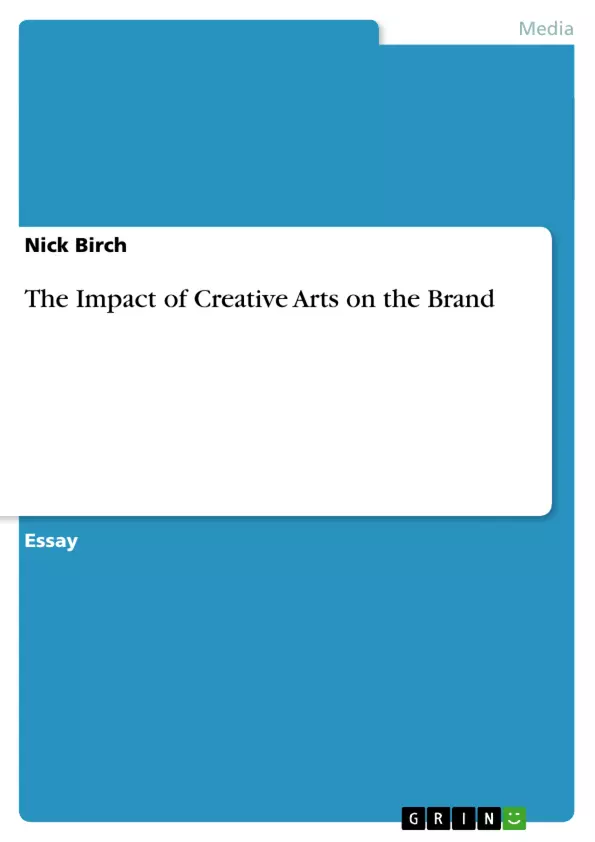The American Marketing Association (AMA) defines a brand as a ‘name, term, sign, symbol or design’ intended to identify and differentiate them from competitors (Lake, N/A). Walter Landor, one of the greats of the advertising industry, said “simply put, a brand is a promise. By identifying and authenticating a product or service it delivers a pledge of satisfaction and quality" (Nelson, 2008). Bates (N/A) believes that the best definition is that a ‘brand is a collection of perceptions in the mind of the consumer’. This definition clearly distinguishes that a brand is very different from a product or service.
A brand is intangible and exists in the mind of the consumer (Bates, N/A).
Social media has turned the ways in which the brand interacts with the customer on its head. With close to 2 billion internet users worldwide, 126 million blogs, 12 billion videos viewed per month in the US alone, (Thomas, 2009), 2 billion tweets on Twitter per month and 500 million people on Facebook (Van Grove, 2010), the face of the consumer may remain essentially the same but the way in which they interact with brands has changed dramatically.
It seems brands are now impacted by the creative arts, the ones more specifically known as social media sites, blogging and user-content creation leading to direct consumer participation in the modification of brand identity. The creative arts and technology have allowed the consumer to have their say heard by an audience, to rapidly share information and empowered brand-users to gain control over how a brand is perceived, their reputation, product quality control and even direction. Amidst the impact of these creative arts, brands now ignore their customers at their peril.
Inhaltsverzeichnis (Table of Contents)
- Introduction
- Millennials - A New Consumer
- A Really Great Idea is Easily Sold
- Participation
Zielsetzung und Themenschwerpunkte (Objectives and Key Themes)
The text explores the impact of creative arts, particularly social media, on brand identity and how brands need to adapt to engage the millennial generation, the new consumer base. It highlights the shift in power dynamics from brands to consumers and emphasizes the importance of authentic connection and participation for brands to be successful.
- Shifting power dynamics between brands and consumers
- Engaging Millennials as a new consumer base
- The role of social media in shaping brand identity
- The importance of authenticity and participation in brand building
- The need for brands to embrace change and adapt to new consumer expectations
Zusammenfassung der Kapitel (Chapter Summaries)
- Introduction: This chapter introduces the concept of a brand and its evolution, particularly in the context of the internet and social media. It highlights how brands are now directly impacted by consumer participation and the creative arts, leading to shifts in brand identity.
- Millennials - A New Consumer: This chapter focuses on Millennials as the latest generation of consumers, outlining their unique characteristics and how they are shaping the way brands engage with them. It emphasizes the need for brands to shift from traditional marketing approaches to creating a more authentic and participatory experience.
- A Really Great Idea is Easily Sold: This chapter emphasizes the importance of knowledge and understanding for Millennials. It suggests that brands should engage Millennials by providing them with behind-the-scenes information and opportunities for learning through discovery.
- Participation: This chapter delves into the emotional needs of Millennials and how participation in brand experiences fulfills those needs. It explores how brands can create a sense of community and empower Millennials to create content, share experiences, and make their mark.
Schlüsselwörter (Keywords)
This text focuses on themes such as brand identity, consumer engagement, social media, millennials, participation, authenticity, and the shift from traditional marketing to participatory experiences. It explores how brands can adapt to the evolving needs of consumers in the digital age, emphasizing the importance of authentic connection, empowerment, and understanding the unique characteristics of the millennial generation.
- Citation du texte
- Nick Birch (Auteur), 2011, The Impact of Creative Arts on the Brand, Munich, GRIN Verlag, https://www.grin.com/document/269676



